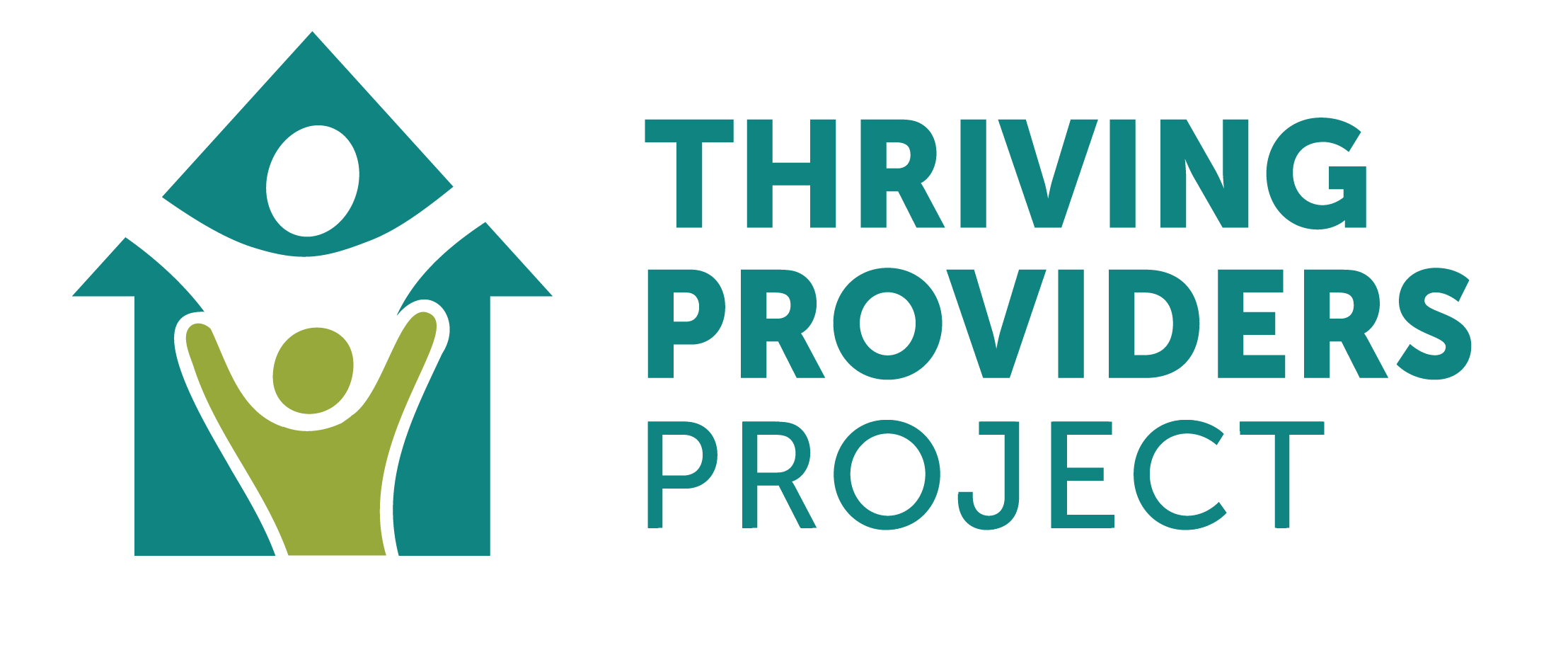The Thriving Providers Project (TPP) is focused on improving both the sufficiency and stability of income for home-based child care providers. We know that when providers’ economic stability is secured, they can engage in caregiving work that promotes quality, ensures family access and connects them to the profession for the long term. We are thrilled to see that the newly released federal rules of the Child Care Development Fund also focus on these important issues. The Child Care Development Fund (also called the Child Care and Development Block Grant) is the largest source of federal child care funding that is managed by states as a block grant. Over 40% of home-based child care providers receive funding via this program and the policies associated with it define much of the family and provider experience in our nation’s child care system. The new rules articulate new mechanisms and payment approaches that can reduce income volatility for providers and create opportunities to increase the rates paid to providers. There are additional aspects to the new rules related to parent participation and community engagement that also align with the values and objectives of TPP that we are excited to see.
Improving Provider Payments
Sufficient and stable revenue for providers is essential to the economic well-being of child care workers and essential to operating a sustainable child care business, whether center or home-based. Income volatility is caused by various factors, but for home-based child care providers it is largely driven by public payments that are based on variation in child attendance and by parent income volatility when they are paying directly. We know that many home-based child care providers work on behalf of low-income families and that the income and economic status of these families is unstable. When families experience an unexpected health event or need a car repair, they might be unable to pay their child care tuition on time or at all. Government approaches that ensure public payment for child care are timely and sufficient are desperately needed to retain the current workforce and ensure existing child care businesses can be sustained.
The new rule makes significant changes that can increase sufficiency and stability of provider payments:
States will pay providers prospectively for child care services. This means that providers should receive payment in advance of delivering services. This will enable providers to proactively plan for expenditures and to know they will not have to front payments for expenses without timely reimbursement. This will reduce provider stress over making ends meet, reduce costs associated with using credit cards or other credit to afford consumable and ongoing operating costs, and allow providers to make preemptive investments in facilities improvement, compensation increases and other critical areas.
States will pay providers based on enrollment, not attendance. Current policies that allow states to pay based on attendance result in the negative consequences of unpredictable and varied reimbursement for costs that are often fixed regardless of child attendance. This current practice discourages providers from serving families who are facing challenges that might result in varied attendance; we know families living in deep poverty, with physical and mental health challenges, with children or adults in the household with disabilities, who are housing insecure, or have unreliable transportation may struggle to attend child care regularly. These are also the families who benefit most from access to high-quality child care. Changing these payment practices will encourage providers to serve families with various challenges without fiscal penalty.
States must use grants and contracts to create payment predictability for providers. Contracts and grants can create a “guarantee” or greater predictability for providers by articulating a number of children and payments that will be paid for via public funds. The terms of these contracts and grants can be 12 months long. This is clearly very important for providers to make proactive plans, to understand their ongoing income and needs, and to make investments necessary to maintain and grow their programs. Additionally, grants and contracts are a financial receivable (asset) for a small business that may enable them to access affordable lines of credit or loans to make facilities improvement or modify their program to expand.
States must use narrow cost analysis when determining payment rates. Currently, most states use the market rate (based on what parents are currently willing and able to pay) to determine the state payment rate. This is a deeply flawed measure that results in payment rates that are far lower than the actual cost of care and often discount the true labor costs associated with care provision. The rule change will require states to use additional data inputs including provider costs to establish rates and this may increase payment rates and move providers to sufficiency of pay.
Increasing Family Access to Child Care Benefits
Guaranteed income programs recognize that barriers to participation in public benefits deter engagement in these programs. These barriers include complex application processes that require various data inputs and verifications including visits or interviews. These barriers include enrollment processes that can take long periods of time and be stalled for myriad reasons within the participants’ control and those outside of their control. These processes can also be costly to participants who might need to pay a medical provider for a child health assessment or travel to an intake location. We know that the time tax and burdens on low-income participants and families are both unfair and counterproductive to the programs’ stated aims of enrolling and serving eligible participants.
The new rule also seeks to improve affordability and reduce burden to families who participate in the child care assistance program through:
Capping family copayments at 7% of household income and waiving copayments for some families. Recognizing that copayment for child care services can be significant and deter families from participating in the child care program, we are very supportive of reducing out-of-pocket costs to families and in some cases waiving all copayments to enable families to access this program. We believe this will encourage families to participate in this benefit and that subsidized child care costs can improve overall family economic stability and well-being. The rule specifically articulates that costs associated with reducing family copays should be borne by the system and not the providers, who should be fully reimbursed.
States create a system to enable presumptive eligibility for families to ensure they can access resources quickly and take advantage of job and education opportunities when they arise. Presumptive eligibility means that families can access services and providers can receive payment while eligibility-determination activities take place. This shifts the burden and cost of this time period to the state whose processes and practices are often the reason for the lengthy determination period and any delays.
Reducing family burden via online applications, requesting minimal necessary family data and allowing eligibility in other benefits to be used to assess eligibility for child care benefits. As we know from TPP and our colleagues in the guaranteed income community, time tax and enrollment burden discourage participation in public benefits. The new rules seek to reduce these burdens to families by requiring that online applications be made available. The new rule also requires that states collect only the minimum amount of family data necessary to determine eligibility and encourages other benefit use as a determining factor.
Engaging Communities in Decision-Making
Lastly, the new rule articulates a value around community input and directs states to use existing quality funds to engage and seek input from families, providers and communities. TPP articulates a value that centers the lived experiences, knowledge and skills of child care providers as co-designers and advisers of the project. At Home Grown, we engage providers as co-designers, implementers and decision-makers across our programs. We are excited to see the Biden Administration make this goal clear to states and to direct resources to this important work.
These new rules are exciting because they acknowledge many facts that we have learned via programs like Thriving Providers Project and other guaranteed income pilots. We hope that states will embrace these new rules as opportunities to engage new partners, bring on new tools and shift their approaches to engage more families in child care services and adequately pay providers who offer services. These rules offer hope that pilots like TPP can inform responsible policymaking that improves the lives of families and child care providers.

